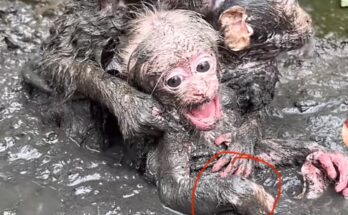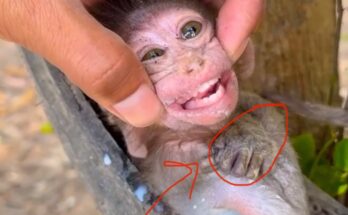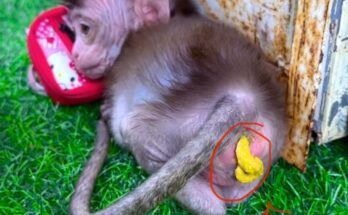Introduction
In the animal kingdom, aggression is a common survival mechanism. Among primates, behaviors such as dominance assertion, territorial disputes, and hierarchical conflict are often observed. However, sometimes these behaviors take unexpected and disturbing forms that raise ethical and biological questions. A recent observation in a wild primate troop has sparked scientific debate due to the extreme aggression shown by an adult male toward a juvenile.
Understanding Primate Aggression
Primates, especially species such as baboons, macaques, and chimpanzees, have complex social structures. Aggression can be a method of establishing or maintaining dominance, securing mating rights, or defending resources. While most aggressive behaviors fall within the norms of dominance rituals, some incidents can seem unusually violent, even to experienced researchers.
Documented Incident
In a documented case observed by field researchers, an adult male monkey was seen isolating a young monkey during troop movement. What followed was an extended episode of biting and dominating behavior that caused significant injury to the juvenile. While it’s unclear whether sexual aggression was involved, the encounter raised concerns among primatologists about trauma, stress responses, and group dynamics following such events.
Scientific Interpretation
Experts caution against anthropomorphizing animal behavior, especially applying human concepts like “rape” to non-human animals. Instead, these incidents are studied through the lens of evolutionary biology and ethology. Such aggression might serve as a display of power, a misguided dominance assertion, or an abnormal behavior triggered by stress, social upheaval, or habitat disruption.
Ethical and Conservation Implications
These types of behaviors, while distressing, are important to document for the sake of understanding animal societies. They can inform conservation strategies, particularly when such behavior is linked to environmental stressors like habitat loss or food scarcity. Monitoring aggression also helps in managing captive populations and understanding primate mental health.
Conclusion
While rare and disturbing, extreme cases of aggression among primates provide a critical window into the complexity of animal social systems. Continued observation and ethical study can help researchers uncover the root causes of such behavior, guiding both scientific knowledge and compassionate conservation efforts.



